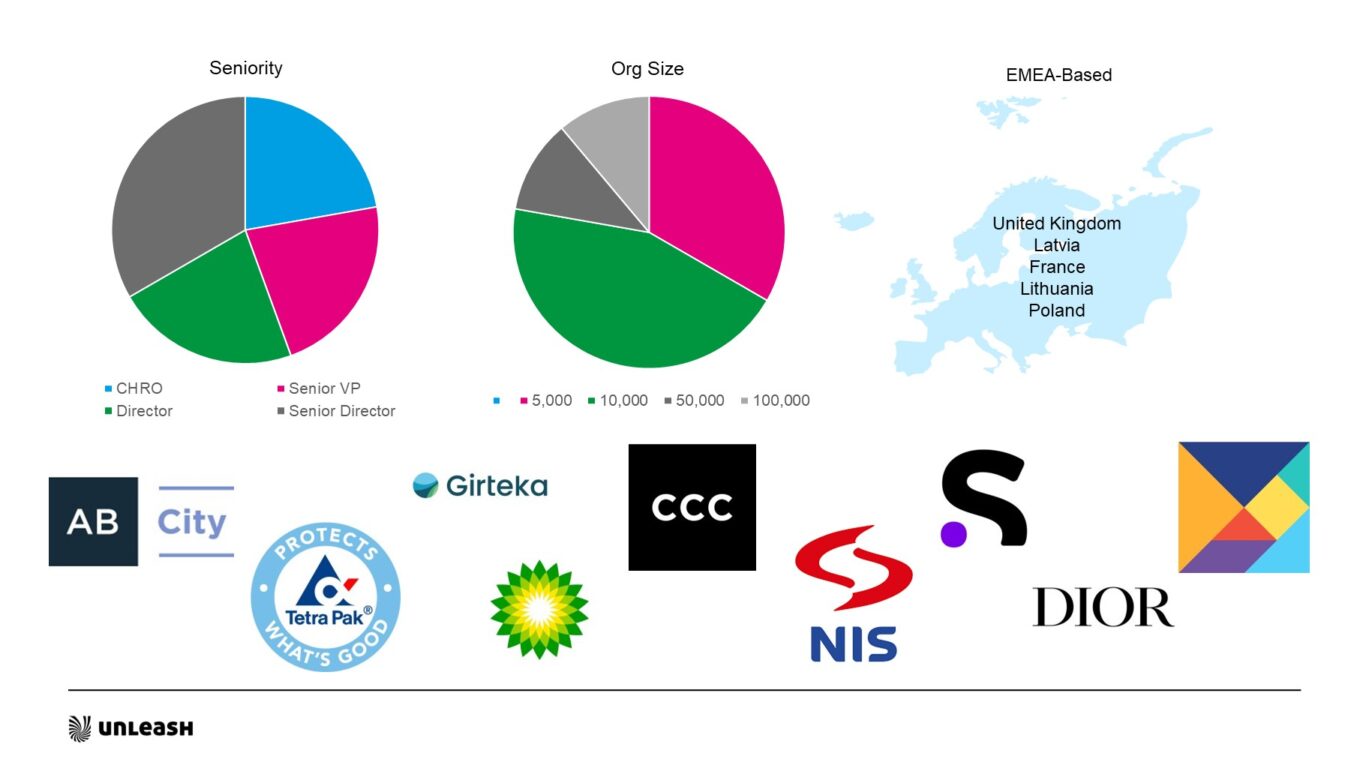Want to drive HR Technology transformation? Start outside HR…
In this exclusive UNLEASH roundtable HR leaders and technology experts discussed the best ways to get board approval for HR technology, exploring the role people technology transformation business cases have in driving HR investment and improvement, and how to create an ROI that makes sense to the executive.
Why You Should Care
HR knows to get better it has to invest in systems and technologies that drive performance and deliver clear ROI — but getting board approval for investment can often be difficult.
It means the function has to create a compelling business case that highlights cost savings and efficiency gains as well as an operational uplift.
Although there can be challenges, cohering this business case into a plan that works for the organization during a time of economic uncertainty is necessary for the long term: to drive operational performance excellence and improvement so the function can transform for the better.
As much as HR knows the benefits that an investment in a new HRIS or digital system brings, getting sign-off from those at the top of the business can be difficult.
The task for HR leaders is then to make the case to the business that an investment in HR technology or digitization is not a luxury but a necessity. A necessity that can then create function and process streamlining as well as help HR divest manual and clunky offline data stores which can avert bigger challenges down the line. A necessity that can also help HR, in a better manner, get at the core of what the people function is about: attracting, retaining, and engaging talent.
However, making such arguments to the board can be a struggle. As such, hurdles to investment, and the best arguments to make to secure funding, were what roundtable attendees discussed at this exclusive HR leader meeting.
The difficulties in securing investment in HR technology
As the roundtable discussion highlighted, getting investment in technology can be difficult. Indeed, even speaking to the business in its favored language is a challenge. Do they want to hear the case for investment in specific figures? What metrics are of most interest to the business? How is it possible to show the value of everything that HR does in just numbers? It’s something that 50% of attendees explicitly mentioned. As such, attendees explained how they spend time thinking about what business performance indicators would benefit from HR technology and how to explain this to senior executives when looking to attract investment for new technology.
However, this isn’t to say that every business has the same issue. Some businesses are happy to invest in HR technology as long as they can cascade group-level investment throughout all business units. Other organizations might struggle to get investment full stop as they have to deal with a private single owner, rather than multiple stakeholders.
Another common barrier to future investment in HR technology is ensuring that any pitch for funding is made in a way that shows alignment to the business — something that 25% of attendees spoke to explicitly. Others at the roundtable spoke to wanting to align with the market i.e. asking for an amount of investment that is normal for the industry.,
And even if an organization understands how to make the business case for investment in the here and now — speaking to how it will deliver on the pandemic-sparked changes for the need for technology, how it will create improved engagement, both deliver on economies of scale and need for local personalization and better people analytics — this can all be complicated by future need. Indeed, one attendee spoke to the need for HR to understand how to make the argument to invest in future trends that would need technology support, or are technology in themselves: whether that’s AI or building a skills-based organization.
Making a business case that speaks to the business
Each HR function exists in a unique business. This means there will be no one-size-fits-all way to make the argument for investment and, as one attendee emphasized, it will be on HR to intimately know the business’ drivers so they can speak about what an investment in the right technology will deliver in the way the business wants.
As such, the senior HR practitioners at the roundtable spoke to the conundrum in different ways. One recounted speaking to the business leadership for a year to get investment but it turned out the most effective showcase for HR technology was when leaders asked for data on the employee headcount of the business and getting accurate information on this took several weeks as it was held on offline spreadsheets.
Another spoke to the importance of agreeing metrics upfront to get investment: such as the number of employees accessing self-service via new technology as well as adoption rates. Others explained how it was important to show technology would improve talent outcomes whilst others said build first, show it works, and then add the bells and whistles at a later date. This ‘build-it-out’ approach was referenced by several attendees.
Of course, cost and savings were a central part of the conversation; referenced by three-quarters of attendees. Here, HR leaders talked about a business case alternately needing to show how technology will drive savings either directly or through reduced people costs, or how improvements to the employee experience or to various other people processes will then create a benefit to the bottom line. It’s on HR to show how an investment creates benefits to people processes, said one leader, whilst another added that talking to the business about economies of scale and how HR tech can help with economic uncertainty can be useful.
Another attendee talked about how ongoing alignment between HR and the business is managed in a consistent manner. It’s not just about going to the business to make a one-off argument for investment but about work, in a year-on-year manner to talk through business goals in the short and long term, and then understanding how HR-specific investments might contribute to this. It’s also on HR to be proportionate with investment requests.
And, as another attendee concluded, HR shouldn’t be shy about the importance of what it does. Often workforce costs can be near the top of a business’ outlay but HR costs can be near the bottom. Here, it is possible for the function to show that even smaller investments in technology can have a massive leveraging impact on one of the business’s biggest cost bases: people.
HR Leader Attendee Demographics

Why join an UNLEASH roundtable?
Our exclusive virtual Roundtables are designed to explore where HR leaders are focused now, key challenges, and prioritizations for the rest of the year. We’ll dig into what matters most when planning for what’s next and equip you with your future strategy. You’ll be joined by senior HR practitioner peers, allowing an opportunity to discuss personal experiences of challenges and wins, providing the ability to benchmark and reconsider current strategies and tech together.
Check out our upcoming events here: HR Roundtables
Sign up to the UNLEASH Newsletter
Get the Editor’s picks of the week delivered straight to your inbox!

Multiple award-winning journalist, editor and content strategist
Dan is an award-winning HR journalist and editor with over five years experience in the HR space.

